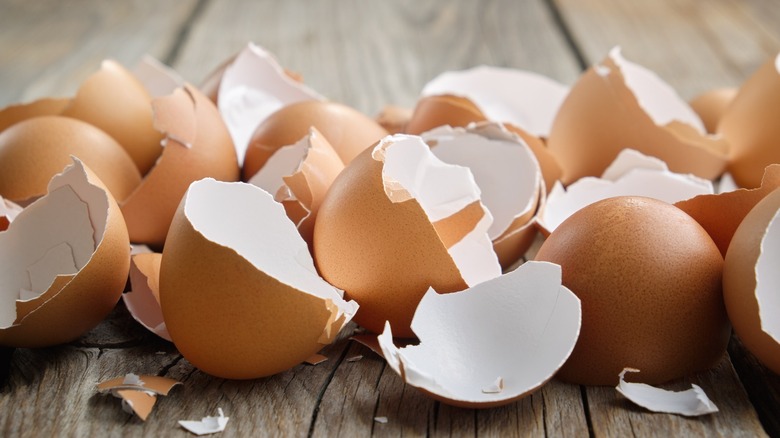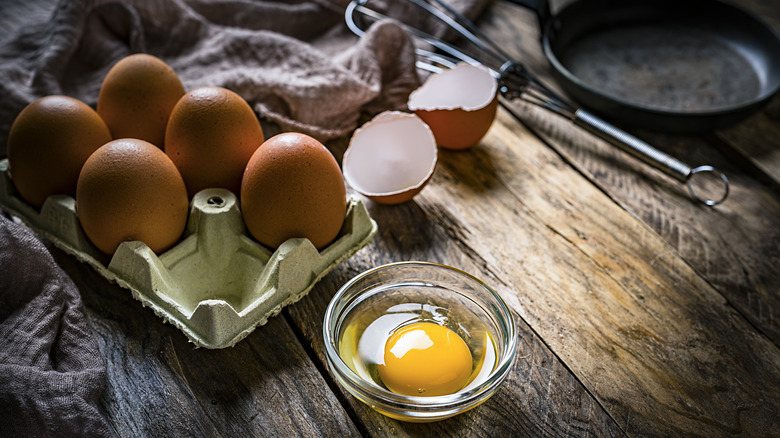You Could Crack An Egg With Another Egg, But How Would You Crack The Last One?
Most of us have cracked an egg both successfully and unsuccessfully at least once in our lives. Cracking an egg isn't exactly a science, but there are better and worse ways of doing it, and doing it incorrectly can result in effectively ruining whatever dish you're preparing. While there are many ways to crack an egg, there's one method that may surprise even the most well-practiced egg aficionados. The trick to cracking an egg perfectly every time isn't having the best bowl or hitting it at just the right angle. Instead, the best egg-cracking hack is simply using another egg.
Cracking an egg on another egg probably feels unnatural to most of us who are used to using the edge of the counter or the top of a bowl. While those common methods do work most of the time, they also increase the likelihood that you'll end up with shells in your food. A hard surface will always make it easy to crack your egg. In some cases, though, it actually makes it too easy. Cracking an egg on a hard surface can cause it to break into little pieces. And, when that happens, you'll have a harder time keeping those little pieces out of your food. An eggshell is a softer surface that's still hard enough to crack another egg. Most of the time, this method gives you a perfect crack without little eggshell pieces.
The art of cracking an egg on another egg
Cook's Illustrated's Instagram account calls the method of cracking an egg using another egg "a classic restaurant trick," and the pros crack their eggs this way for good reason. Emily Kim, co-founder of the Pastry Project, told King Arthur Baking, "When cracking many eggs, we'll take an egg in each hand and hit them against each other to crack them." And, don't worry –– it should only crack one of the two eggs, leaving the other intact for later use.
While Kim confirms that this method is "gentler on the shell and creates fewer fragments," they've also got a tip for the occasional piece of shell that slips through the cracks –– no pun intended. "We crack eggs into a clear container and lift it up to examine for any shell fragments before adding them to a dough or batter," says Kim. You can fish the pieces out easily with minimal mess. Plus, it's best to crack eggs into a separate bowl, anyway. As Ina Garten always says, "you never know when you'll get a bad egg!"
When using another egg to crack your egg, it's unavoidable that you'll always be left with one single egg. When that happens, you'll have to go back to a common egg-cracking method for the last egg and hope for the best.

